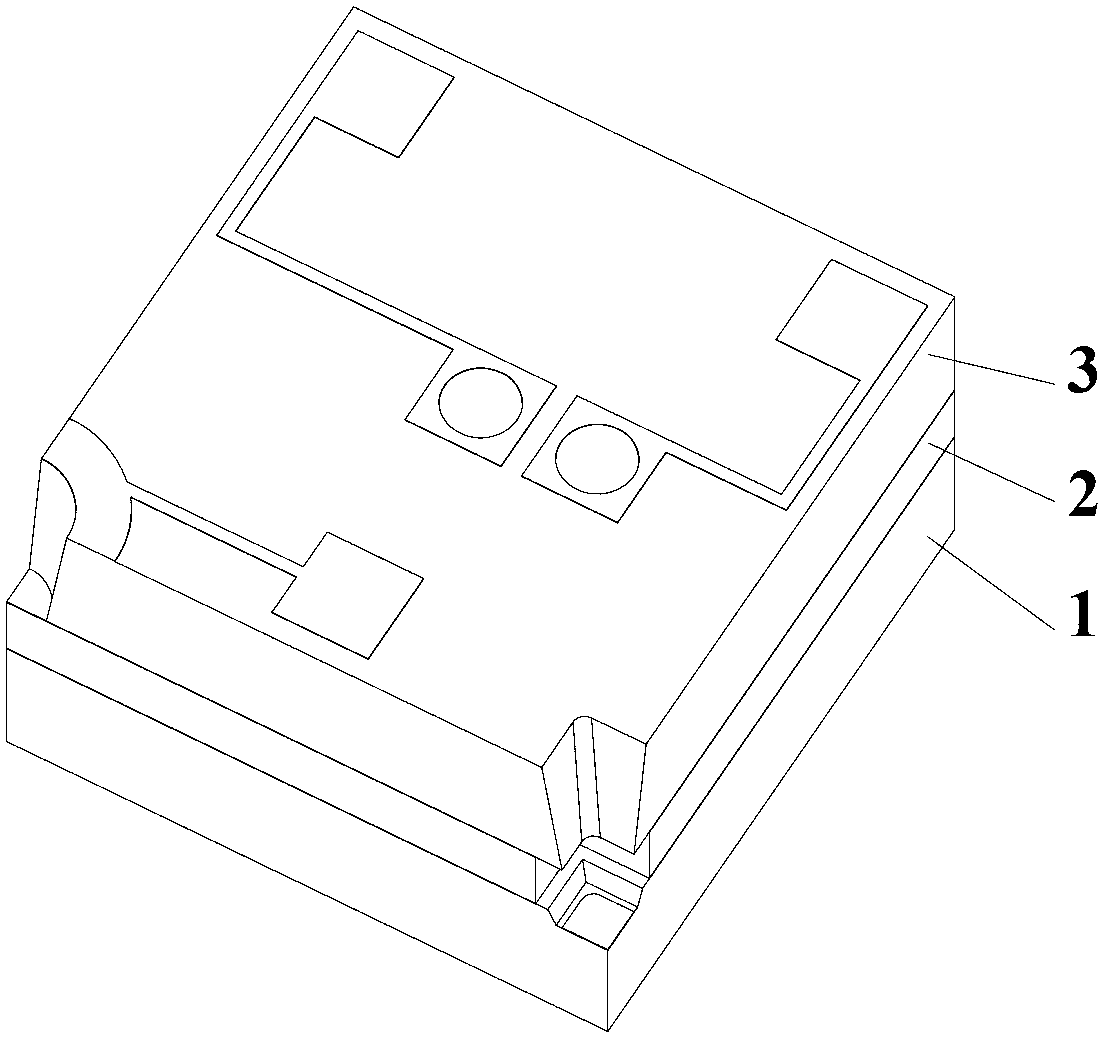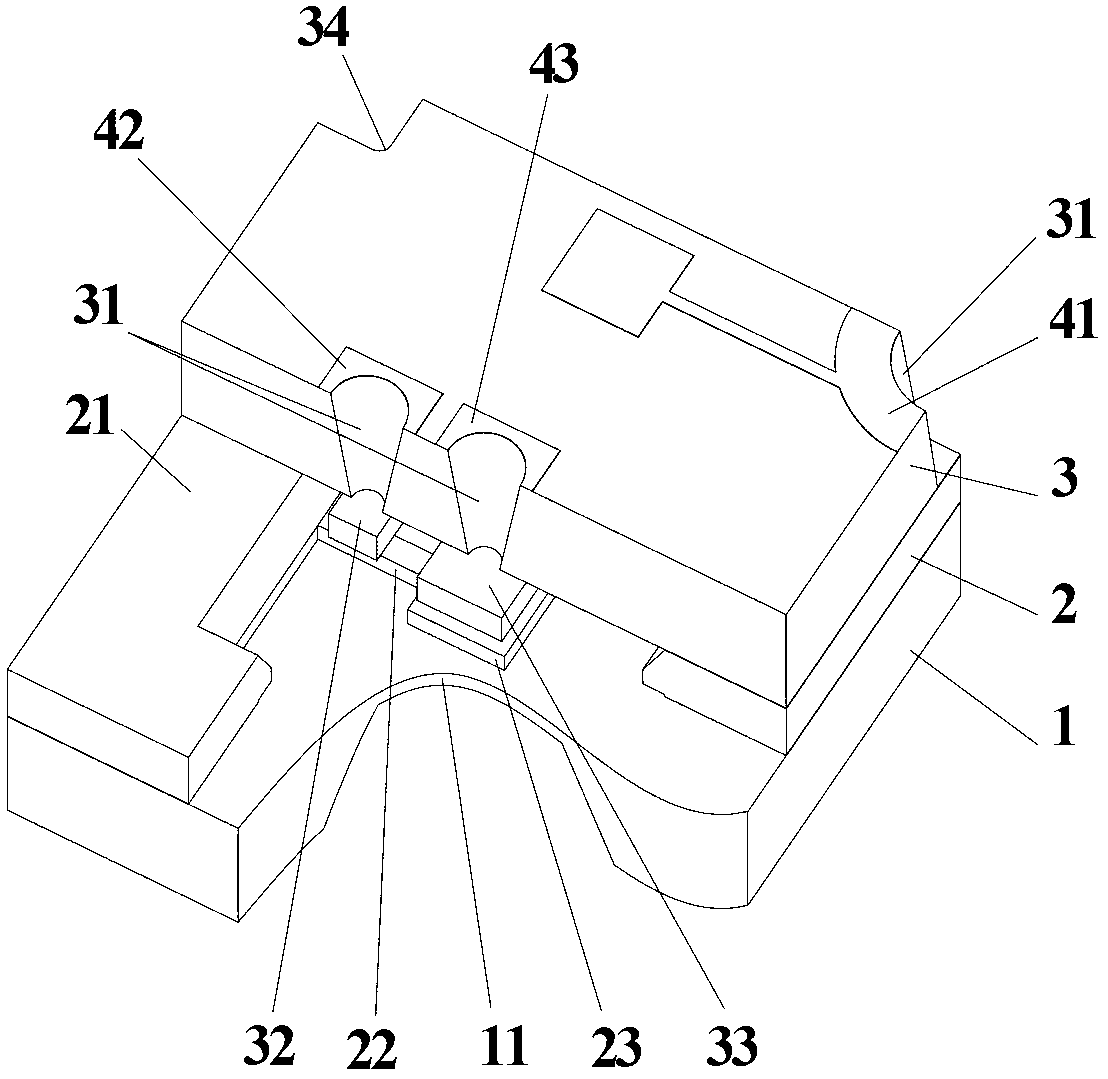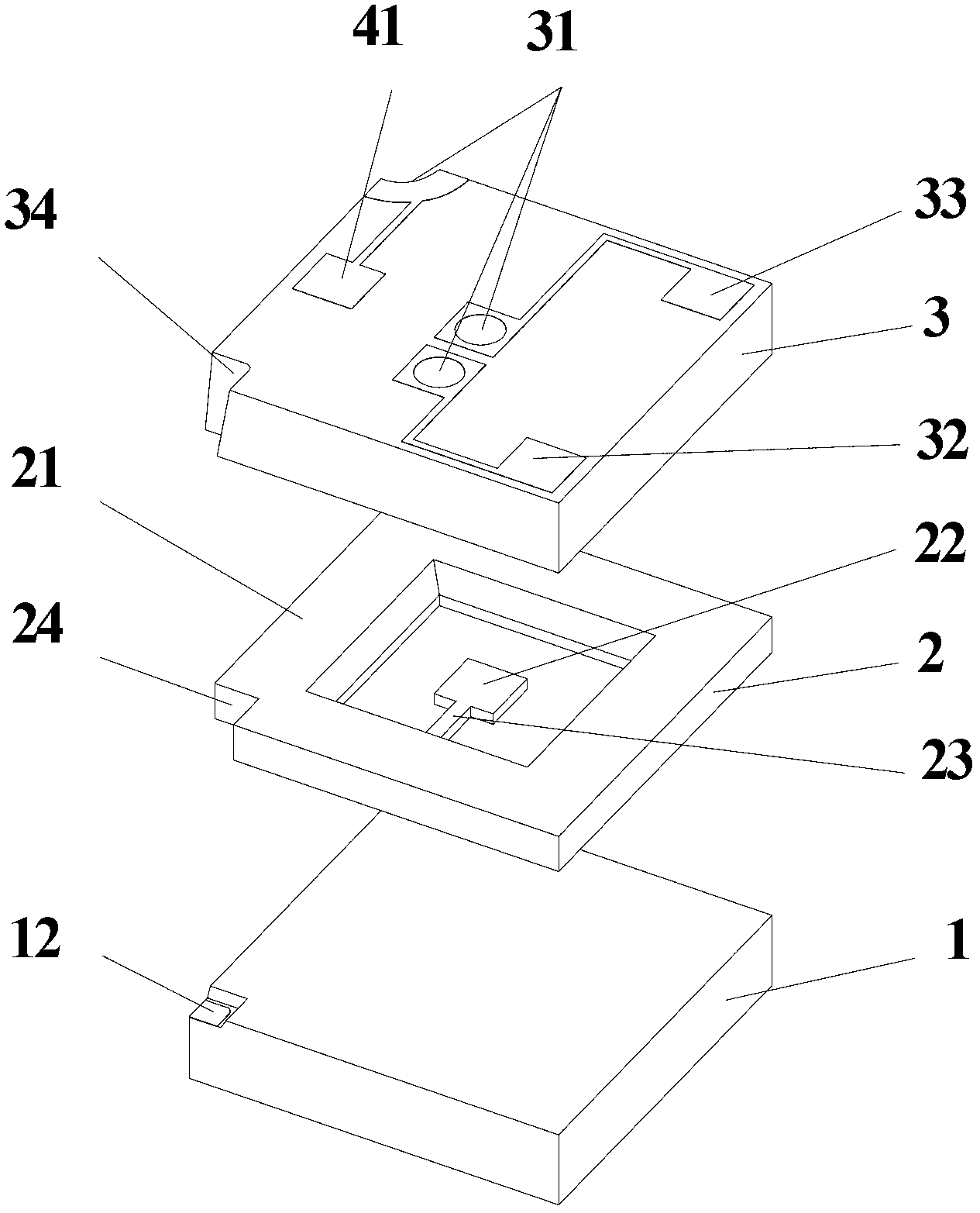Pressure sensor utilizing electrostatic negative stiffness and production method of pressure sensor
A technology of pressure sensor and negative stiffness, which is applied in the direction of measuring fluid pressure through electromagnetic components, measuring fluid pressure, measuring force by measuring the frequency change of stressed vibrating elements, etc., can solve the problem that the quality factor is difficult to reach the cantilever beam resonance structure. Tens of thousands of levels, high-precision pressure sensor design increases difficulty, pressure measurement temperature error and other issues, to achieve the effect of reducing design difficulty, improving signal-to-noise ratio, and improving measurement accuracy
- Summary
- Abstract
- Description
- Claims
- Application Information
AI Technical Summary
Problems solved by technology
Method used
Image
Examples
Embodiment Construction
[0034] see Figure 1-7 , the pressure sensor described in the embodiment of the present invention is provided with a pressure sensitive layer 1, a cantilever resonant layer 2, a vacuum package cover layer 3 and electrodes; the pressure sensitive layer 1, a cantilever resonator layer 2 and a vacuum package cover layer 3 are arranged from bottom to top . A pressure sensitive film 11 is provided in the middle of the pressure sensitive layer 1 , and the upper end of the pressure sensitive layer 1 is connected to the lower end of the cantilever resonant layer 2 . The cantilever resonant layer 2 is a frame structure, and the cantilever resonant layer 2 is provided with a cantilever beam 22 with a mass block 23, and the cantilever beam 22 with the mass block 23 extends from the inner side of the frame of the cantilever resonant layer to the center, and the cantilever beam The mass block 23 of 22 is located right above the pressure sensitive membrane 11; The electrodes include a dri...
PUM
 Login to View More
Login to View More Abstract
Description
Claims
Application Information
 Login to View More
Login to View More - R&D
- Intellectual Property
- Life Sciences
- Materials
- Tech Scout
- Unparalleled Data Quality
- Higher Quality Content
- 60% Fewer Hallucinations
Browse by: Latest US Patents, China's latest patents, Technical Efficacy Thesaurus, Application Domain, Technology Topic, Popular Technical Reports.
© 2025 PatSnap. All rights reserved.Legal|Privacy policy|Modern Slavery Act Transparency Statement|Sitemap|About US| Contact US: help@patsnap.com



